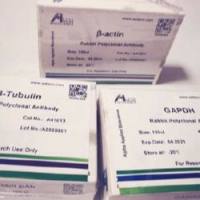Proteins interacting with messenger RNAs (mRNAs) affect their nuclear processing, export, translation efficiency, stability,
or cytoplasmic localization. Such RNA-binding proteins are often modular, containing RNA-binding domain(s) and other functional
modules. To analyze the function of such proteins independent of their normal RNA-binding domains or to introduce effector
modules to defined RNA-binding regions, a number of tethering approaches have been developed, often based on the use of large
proteins and their specifically interacting RNA sequences. Here we report the use of a versatile system to tether proteins
to mRNAs. The 22 amino acid RNA-binding domain of the λ bacteriophage antiterminator protein N (λN-(1–22) or λN peptide) is
used to tag the protein of interest, and its specific 19 nt binding site (boxB) is inserted into the target RNA recruiting
the properties of the fusion protein to the RNA. The major advantage of this system derives from the small size of the peptide
and its target sequence, which facilitates cloning and its use for biochemical experiments and diminishes possible interferences
with the fused protein. The chapter illustrates the use of this system to create dedicated mRNA-specific factors involved
in processes, such as mRNA translation and nonsense-mediated mRNA decay.






